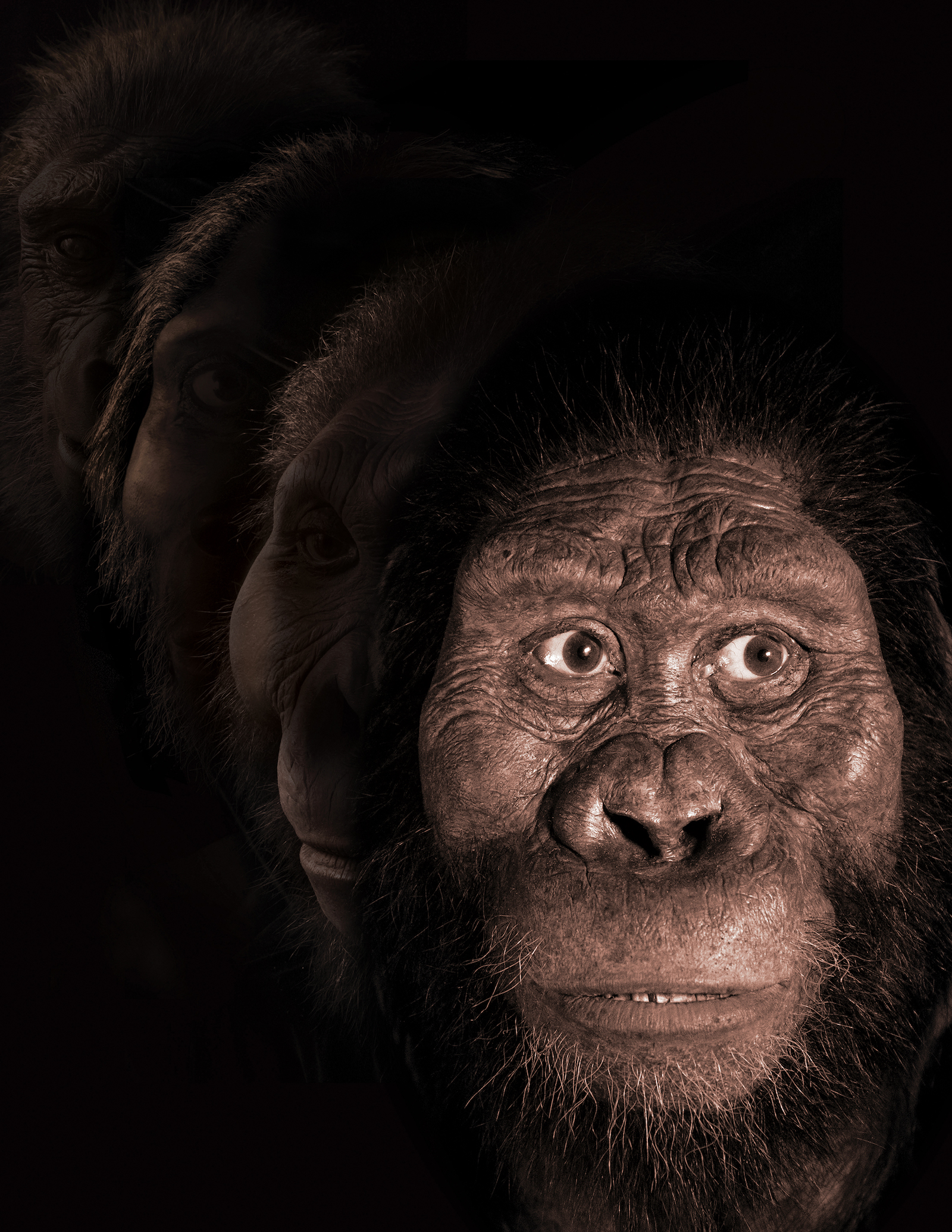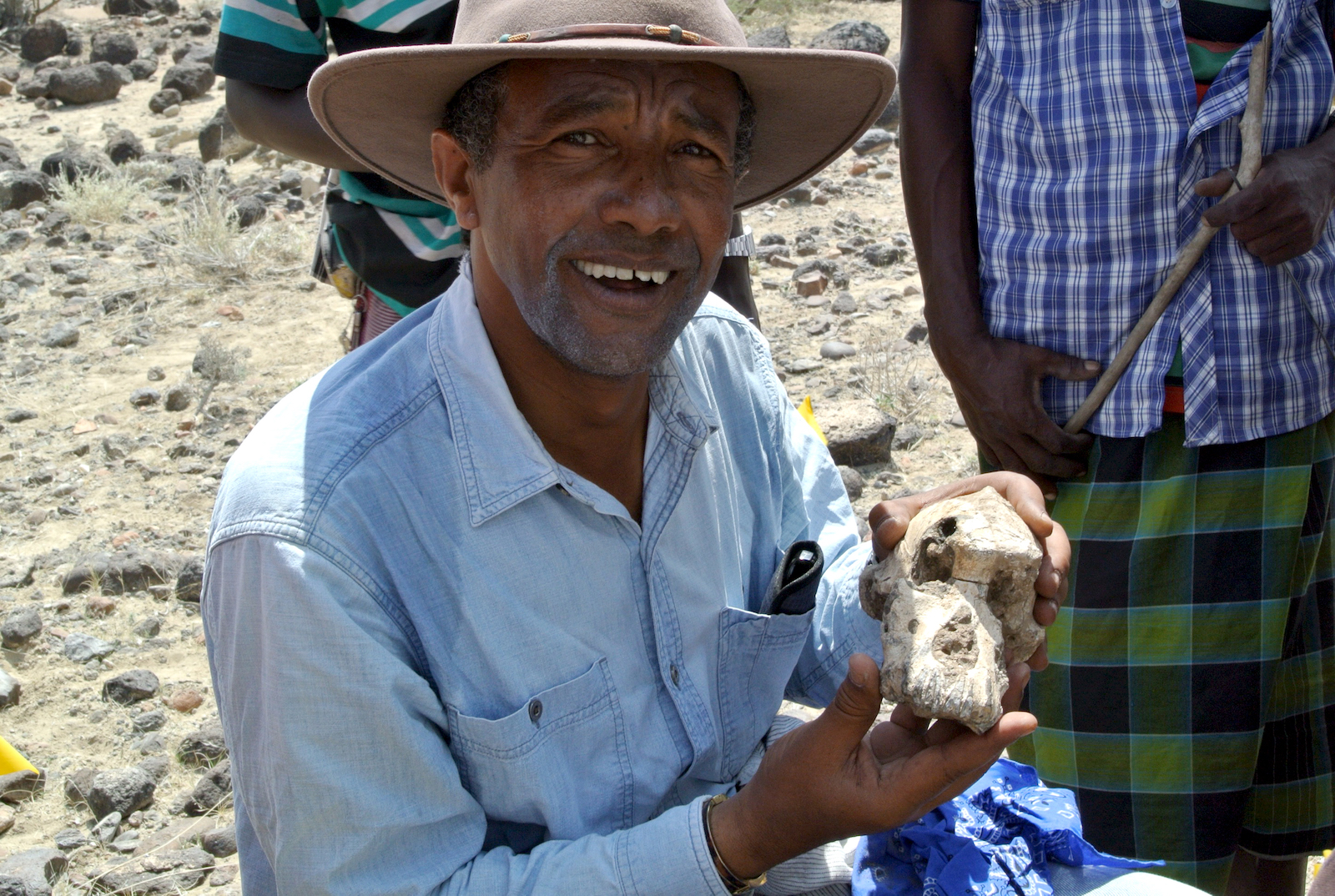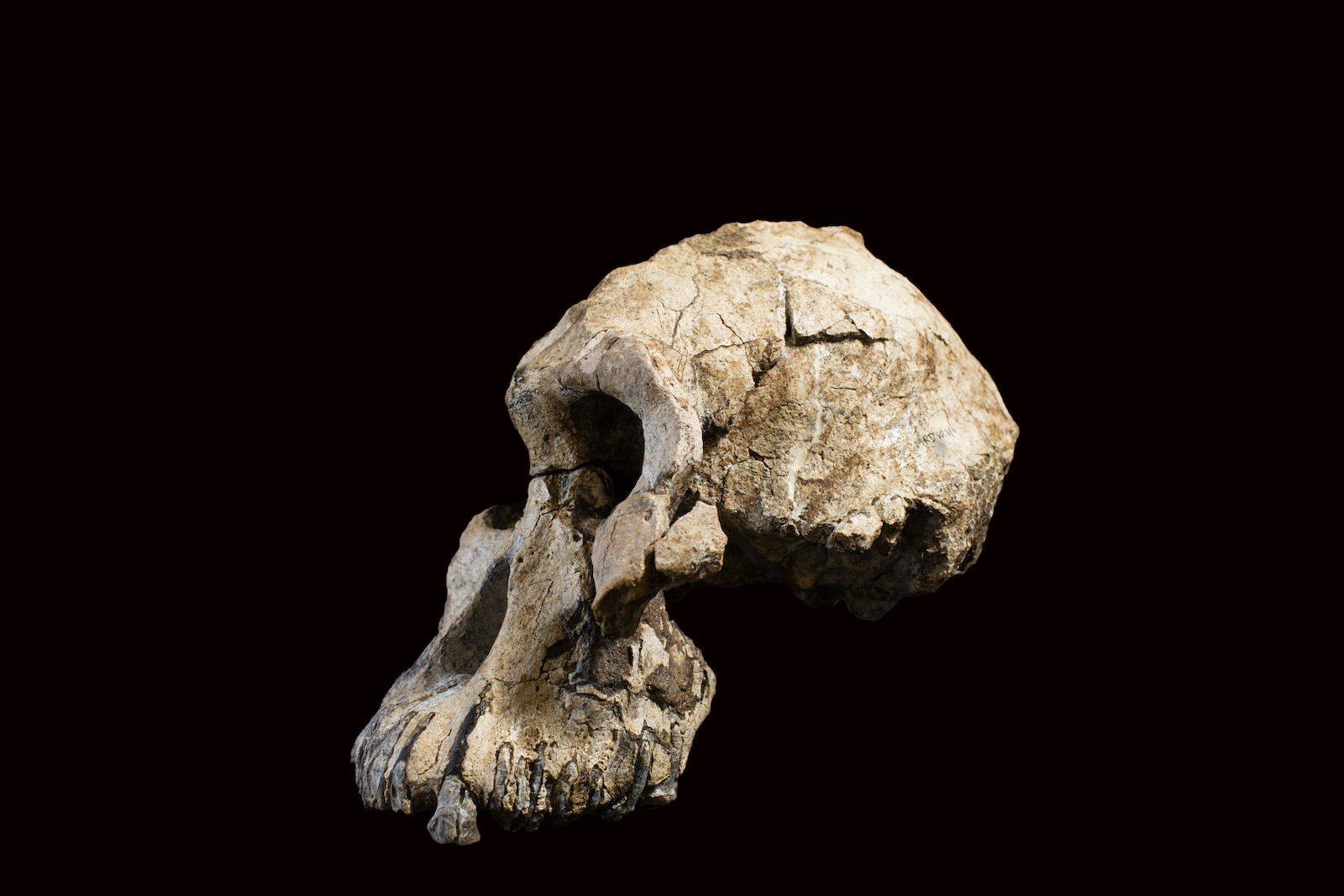New Fossil Reveals Face of Oldest Known 'Lucy' Relative
A nearly complete cranium from Ethiopia reveals the face of Australopithecus anamensis, the oldest known species of Australopithecus.

The face of the oldest known Australopithecus species — a relative of the famous "Lucy" — is no longer a mystery.
For the first time, paleontologists have discovered a near-complete skull of Australopithecus anamensis. The fossil, a bony visage with a protruding jaw and large canine teeth, dates back 3.8 million years, indicating that A. anamensis probably overlapped with Lucy's species, Australopithecus afarensis, for at least 100,000 years.
The discovery reveals a face similar to that of Lucy, an A. afarensis specimen found in 1974 that dates back about 3.2 million years — but with a few noticeable differences.
"What we've known about Australopithecus anamensis so far was limited to isolated jaw fragments and teeth," study co-author Yohannes Haile-Selassie, a paleoanthropologist at the Cleveland Museum of Natural History, told reporters during a news conference announcing the find. "We didn't have any remains of the face or the cranium except for one small fragment near the ear region."
Related: In Photos: See the Face of a New Human Ancestor
A face of the past
All of that changed on Feb. 10, 2016, when Haile-Selassie and his colleagues found the cranium in two large pieces in the Godaya Valley of the Afar region of Ethiopia. The fossil was buried in the sand of an ancient river delta that emptied near the shore of a lake, Beverly Saylor, a professor of stratigraphy and sedimentology at Case Western Reserve University, said at the same news conference. Saylor led the team of paleobotanists, geologists and paleontologists who worked out the age and geological context of the fossil.
The river likely transported the skull from the location where the hominin, or human ancestor, died, Saylor said. But the fossil was not very abraded by sediments, so it probably had not traveled far, she added.
Sign up for the Live Science daily newsletter now
Get the world’s most fascinating discoveries delivered straight to your inbox.

The hominin "probably was living along the river and the shores of this lake," she said. The shores would have been forested, she added, but the surrounding area was arid scrubland. By dating minerals and volcanic tuffs in the region, Saylor and her colleagues confidently pegged the age of the A. anamensis fossil, dubbed "MRD" as an abbreviation of its specimen classification, at 3.8 million years. They suspect the individual was a male, based on the size of the bones.
"This specimen fills in an important gap in our knowledge of the cranial anatomy of Australopithecus during this period," said Amélie Beaudet, a paleoanthropologist at the University of the Witwatersrand, in South Africa, who was not involved in the new research. The fossil not only reveals more about changes in Australopithecus through time, she told Live Science, but may help illuminate geographical connections among species. The skull shares features with Australopithecus africanus, an extinct species found in southern Africa, she said.
The hominin's face was not quite as massive or as rugged as Lucy's, but it was still robust, the researchers reported today (Aug. 28) in the journal Nature. The canine teeth were smaller than those of earlier hominids but larger than those of A. afarensis like Lucy. The lower jaw protruded, ape-like. That's far different from the relatively flat faces of modern humans and other species of the genus Homo, which first evolved around 2.8 million years ago.
The big bones of australopithecines probably evolved to help these human ancestors chew rough foods, study co-author Stephanie Melillo, a paleoanthropologist at the Max Planck Institute for Evolutionary Anthropology in Germany, said at the news conference. The more delicate faces of the genus Homo probably evolved as human ancestors moved to more-open grassland habitats and started incorporating meat into their diets, thereby fueling bigger brains and lessening the need to chew, Haile-Selassie said.

A crowded field
Because there are very few fossils of hominins, from 3.6 million to 3.9 million years ago, identifying and comparing species can lead to controversial conclusions, Haile-Selassie said. The new fossil, however, adds evidence to the notion that early hominins were a diverse bunch. The shapes of the skulls and teeth of A. anamensis and A. afarensis are quite different, Haile-Selassie said. Another skull fragment dating back 3.9 million years, found at Ethiopia's Middle Awash site, belongs to an A. afarensis individual, he said. That means that A. anamensis didn't die out until at least 100,000 years after A. afarensis came on the scene.
The find supports the idea that early hominin evolution was not linear. Species didn't always arise, evolve into new species and vanish from the face of the Earth, Haile-Selassie said. Rather, subgroups of hominins were probably becoming isolated from the broader population, interbreeding and accumulating enough changes to become entirely new species, all while their parent species survived and thrived elsewhere.
"Now, instead of a simple model of one species evolving into another, it seems likely that even early on in human evolution that there were multiple hominin species living at any one time, and that our evolutionary tree is very bushy at its base," said John Kappelman, an anthropologist at the University of Texas at Austin who studies early hominins but was not involved in the new research.
The landscape where these early hominins lived might have contributed to this evolutionary diversity by keeping subpopulations separate, Saylor said.
"The geological evidence is showing that it was an active, very diverse setting with steep hillsides and volcanoes and large basalt flows," she said.
For modern humans, this diverse field of ancestors raises questions about which species really gave rise to the first Homo species. While Lucy and her A. afarensis relatives are certainly candidates for the most-direct ancestor, there were other australopithecines living at the same time that could have given rise to the genus Homo, Haile-Selassie said. He and his colleagues also have argued, based on fossil evidence, for the existence of another australopithecine, Australopithecus deyiremeda, living between 3.5 million and 3.3 million years ago. However, not all scientists agree that A. deyiremeda was a separate species.
Previously discovered body and limb fossils of A. anamensis suggest that it walked on two legs but also spent time climbing in trees, much like Lucy, Kappelman told Live Science. Its brain was about the size of a modern chimpanzee's.
"What we see is a unique combination of adaptations that was apparently stable across a million years or more," Kappelman said. "Instead of studying these ancient fossil hominins as simply our ancestors, it is equally important to understand them as once-living animals that were well adapted to their particular environments; this latter approach permits us to better understand the sorts of selection pressures that drove human evolution."

Stephanie Pappas is a contributing writer for Live Science, covering topics ranging from geoscience to archaeology to the human brain and behavior. She was previously a senior writer for Live Science but is now a freelancer based in Denver, Colorado, and regularly contributes to Scientific American and The Monitor, the monthly magazine of the American Psychological Association. Stephanie received a bachelor's degree in psychology from the University of South Carolina and a graduate certificate in science communication from the University of California, Santa Cruz.









